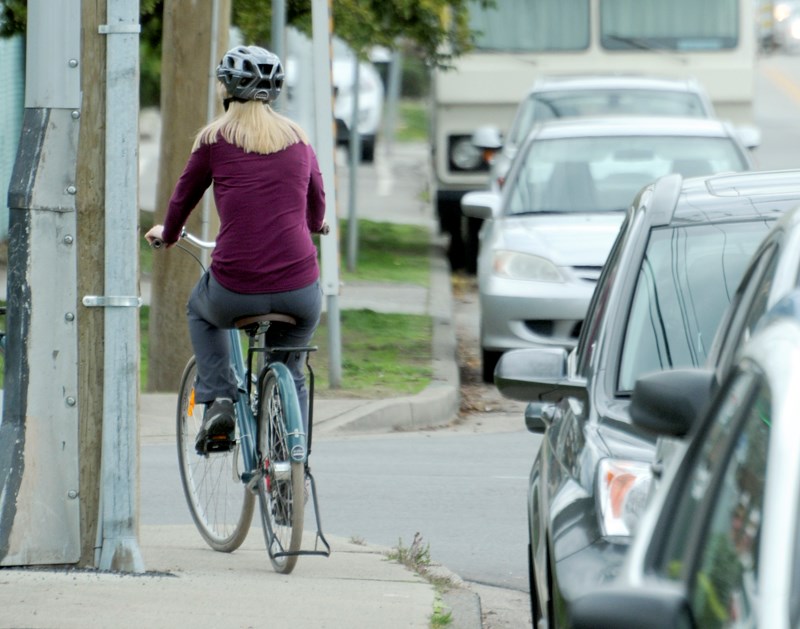North Vancouver RCMP are asking cyclists to please keep their two wheels on the road or bike lanes, and not the sidewalks.
There has been an uptick in the number of pedestrian complaints the detachment receives, especially around Central and Lower Lonsdale, according to Cpl. Richard De Jong, North Vancouver RCMP spokesman. Officers could soon be handing out more $109 fines.
One Mountie had a recent run-in with a cyclist on the sidewalk who “didn’t take our suggestion to get off the bike and kept riding.”
“After a brief pursuit, we stopped him and took his bike and gave him a ticket,” De Jong said. “People don’t see it as a serious offence. We’ve had close calls.”
The reminder from the RCMP has opened up another conversation among North Vancouver residents about the sometimes inhospitable places roads can be for people on bikes.
“Why would anybody want to ride on the sidewalk with slow-moving pedestrians? There’s only one reason for that and that reason is they don’t feel safe on the road,” said Martyn Schmoll, who frequently posts on social media about “inequities baked into our transportation system.”
“The reason they don’t feel safe on the road is because the roads are designed with zero-accommodation for anybody but drivers.”
Cameron Maltby, a cycling advocate and self-described “curmudgeon,” said he routinely sees kids biking to and from Carson Graham secondary on the sidewalks but doesn’t fault them for it. “If I was a kid their age, I wouldn’t want to be on West 23rd at all because the speed doesn’t get enforced and, even though it’s not a designated truck route, it’s used as a shortcut from Marine Drive,” he said.
Chesterfield and Jones avenues have similar problems, Maltby added. “They’re all designed for higher speeds than what the posted limit is. Until the designs change, I think we have to look to the RCMP to start enforcing the speed limit. Otherwise, people aren’t going to feel safe and they’re going to end up on the sidewalk.”
In other areas of North Vancouver, motorists park in designated bike lanes or use them as loading zones, which also tends to go unenforced, Maltby said.
A big part of the problem, Schmoll said, is a lingering cultural view that streets are primarily for cars and not for all modes of transportation, and people on bikes tend to bear the brunt of drivers’ frustrations.
“Statistics in Vancouver actually show that 93 per cent of bike-car collisions are based on driver error. That’s based on police stats and ICBC stats. They’re ignoring the statistical reality of the situation and instead, siding with the emotional driver complaint side,” he said. “As a taxpayer who pays, dollar-for-dollar, as much for the roads as any driver, why do I not have safe accommodation on that road?”
De Jong said concerns about street design should be sent to the municipalities.
“If there are areas bicyclists feel are high risk, that’s something that should be directed to the city or the district as well so they can get, perhaps, some more signage or dedicated lanes,” he said.
As for cases of speeding and blocked cycling lanes…
“Call it in. If the police don’t know, then we can’t enforce,” he said.



